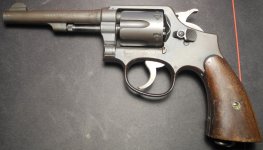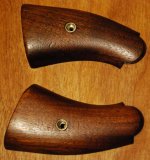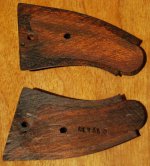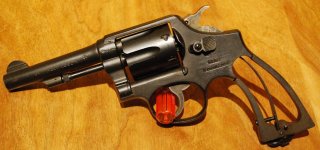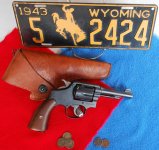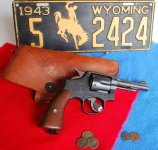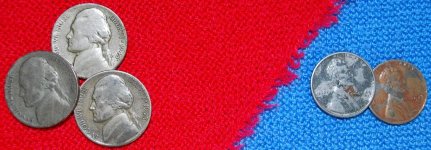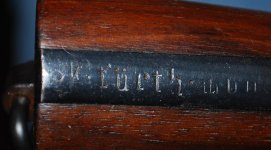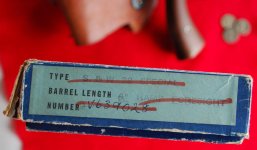Howdy Wild Bill, and welcome aboard.
The photo of the right side of your Victory shows ".38 S&W CTG," which is the name Smith & Wesson uses for the caliber. That's likely what you'll find on the contemporary boxes of ammo that fit your Victory.
Gorgeous revolver! Congrats on being its new owner, and thanks for sharing it with us. I'm relatively new to the Victory Model (this forum offers a wealth of "corporate knowledge" on the topic), but I'm guessing the left side of your gun has some interesting imprints as well.
I'm betting Absalom, DWalt, and others will be along shortly with more details for you.
Cheers,
Bob
The photo of the right side of your Victory shows ".38 S&W CTG," which is the name Smith & Wesson uses for the caliber. That's likely what you'll find on the contemporary boxes of ammo that fit your Victory.
Gorgeous revolver! Congrats on being its new owner, and thanks for sharing it with us. I'm relatively new to the Victory Model (this forum offers a wealth of "corporate knowledge" on the topic), but I'm guessing the left side of your gun has some interesting imprints as well.
I'm betting Absalom, DWalt, and others will be along shortly with more details for you.
Cheers,
Bob

